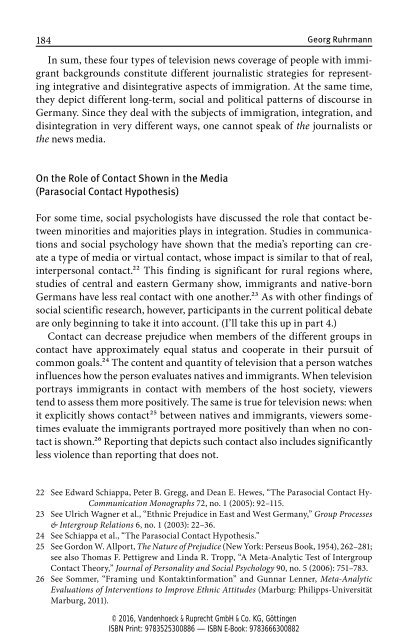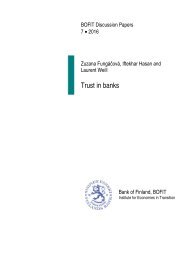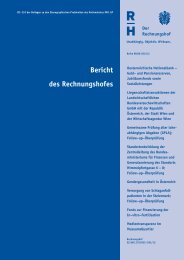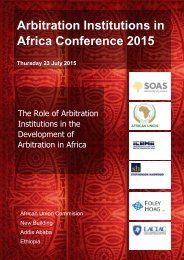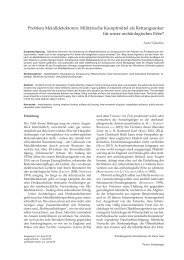Media and Minorities
9783666300882_ruhrmann_media_ebook_034247
9783666300882_ruhrmann_media_ebook_034247
You also want an ePaper? Increase the reach of your titles
YUMPU automatically turns print PDFs into web optimized ePapers that Google loves.
184<br />
Georg Ruhrmann<br />
In sum, these four types of television news coverage of people with immigrant<br />
backgrounds constitute different journalistic strategies for representing<br />
integrative <strong>and</strong> disintegrative aspects of immigration. At the same time,<br />
they depict different long-term, social <strong>and</strong> political patterns of discourse in<br />
Germany. Since they deal with the subjects of immigration, integration, <strong>and</strong><br />
disintegration in very different ways, one cannot speak of the journalists or<br />
the news media.<br />
On the Role of Contact Shown in the <strong>Media</strong><br />
(Parasocial Contact Hypothesis)<br />
For some time, social psychologists have discussed the role that contact between<br />
minorities <strong>and</strong> majorities plays in integration. Studies in communications<br />
<strong>and</strong> social psychology have shown that the media’s reporting can create<br />
a type of media or virtual contact, whose impact is similar to that of real,<br />
interpersonal contact.22 This finding is significant for rural regions where,<br />
studies of central <strong>and</strong> eastern Germany show, immigrants <strong>and</strong> native-born<br />
Germans have less real contact with one another.23 As with other findings of<br />
social scientific research, however, participants in the current political debate<br />
are only beginning to take it into account. (I’ll take this up in part 4.)<br />
Contact can decrease prejudice when members of the different groups in<br />
contact have approximately equal status <strong>and</strong> cooperate in their pursuit of<br />
common goals.24 The content <strong>and</strong> quantity of television that a person watches<br />
influences how the person evaluates natives <strong>and</strong> immigrants. When tele vision<br />
portrays immigrants in contact with members of the host society, viewers<br />
tend to assess them more positively. The same is true for television news: when<br />
it explicitly shows contact25 between natives <strong>and</strong> immigrants, viewers sometimes<br />
evaluate the immigrants portrayed more positively than when no contact<br />
is shown.26 Reporting that depicts such contact also includes significantly<br />
less violence than reporting that does not.<br />
22 See Edward Schiappa, Peter B. Gregg, <strong>and</strong> Dean E. Hewes, “The Parasocial Contact Hy-<br />
Communication Monographs 72, no. 1 (2005): 92–115.<br />
23 See Ulrich Wagner et al., “Ethnic Prejudice in East <strong>and</strong> West Germany,” Group Processes<br />
& Intergroup Relations 6, no. 1 (2003): 22–36.<br />
24 See Schiappa et al., “The Parasocial Contact Hypothesis.”<br />
25 See Gordon W. Allport, The Nature of Prejudice (New York: Perseus Book, 1954), 262–281;<br />
see also Thomas F. Pettigrew <strong>and</strong> Linda R. Tropp, “A Meta-Analytic Test of Intergroup<br />
Contact Theory,” Journal of Personality <strong>and</strong> Social Psychology 90, no. 5 (2006): 751–783.<br />
26 See Sommer, “Framing und Kontaktinformation” <strong>and</strong> Gunnar Lenner, Meta-Analytic<br />
Evaluations of Interventions to Improve Ethnic Attitudes (Marburg: Philipps-Universität<br />
Marburg, 2011).<br />
© 2016, V<strong>and</strong>enhoeck & Ruprecht GmbH & Co. KG, Göttingen<br />
ISBN Print: 9783525300886 — ISBN E-Book: 9783666300882


